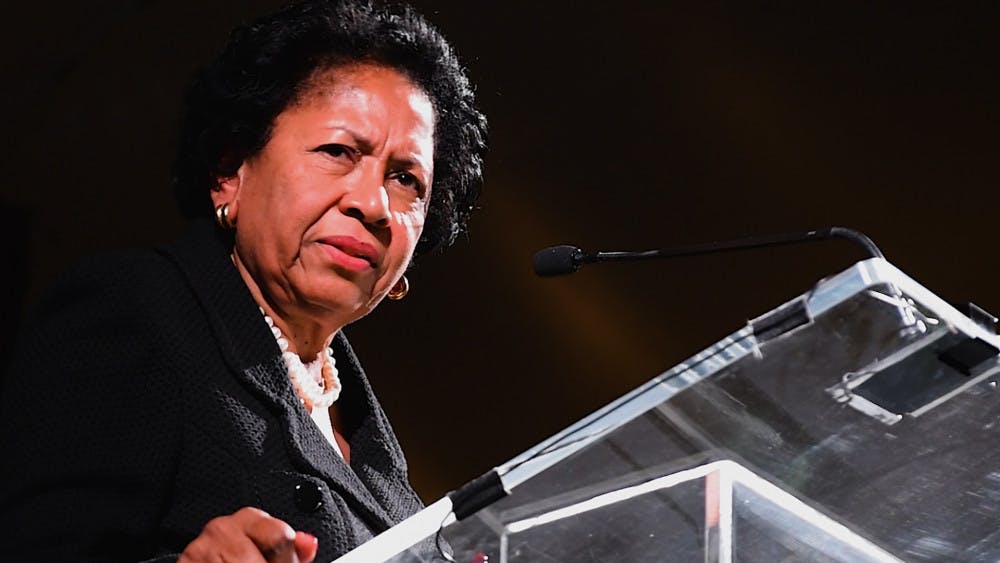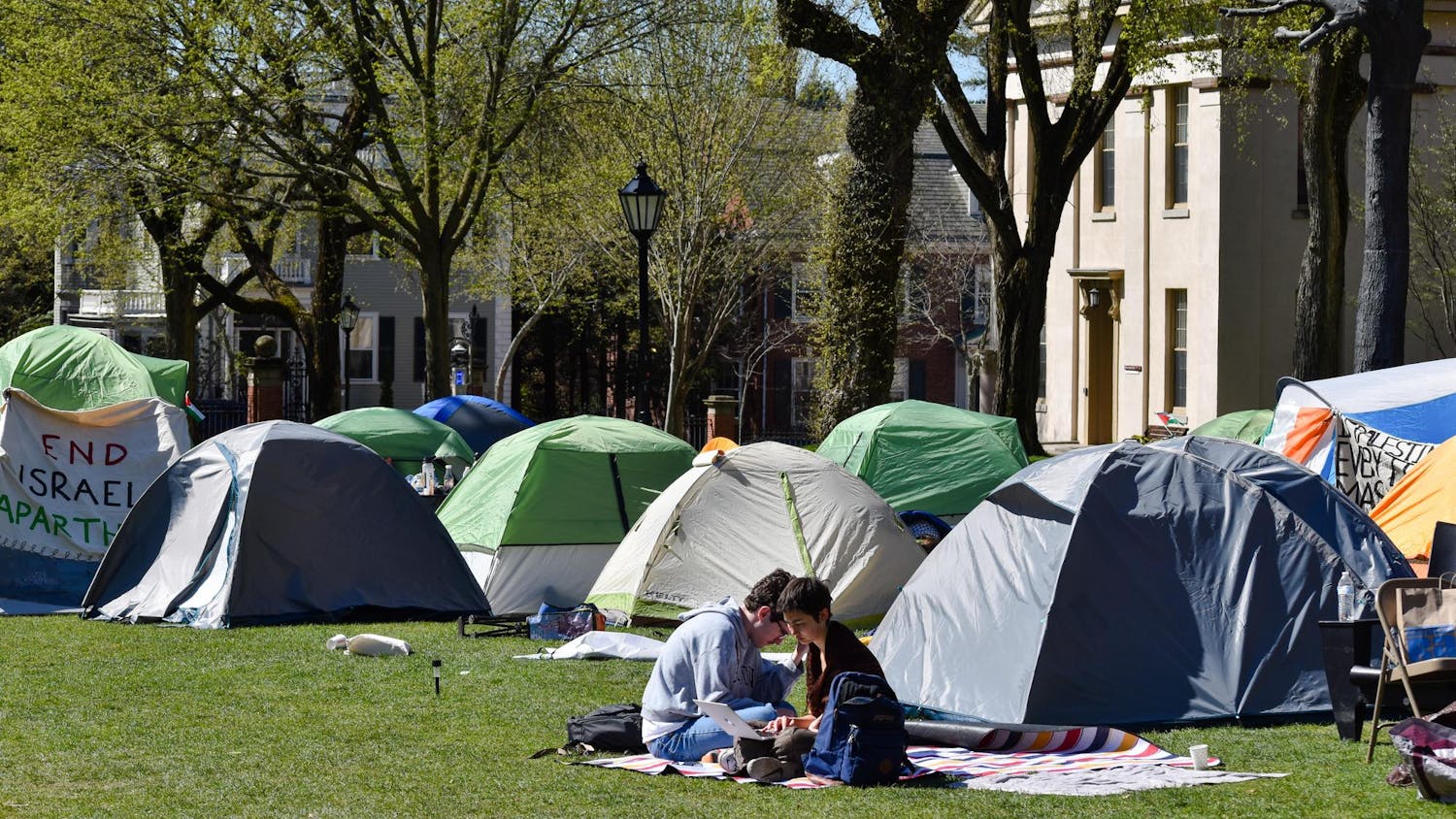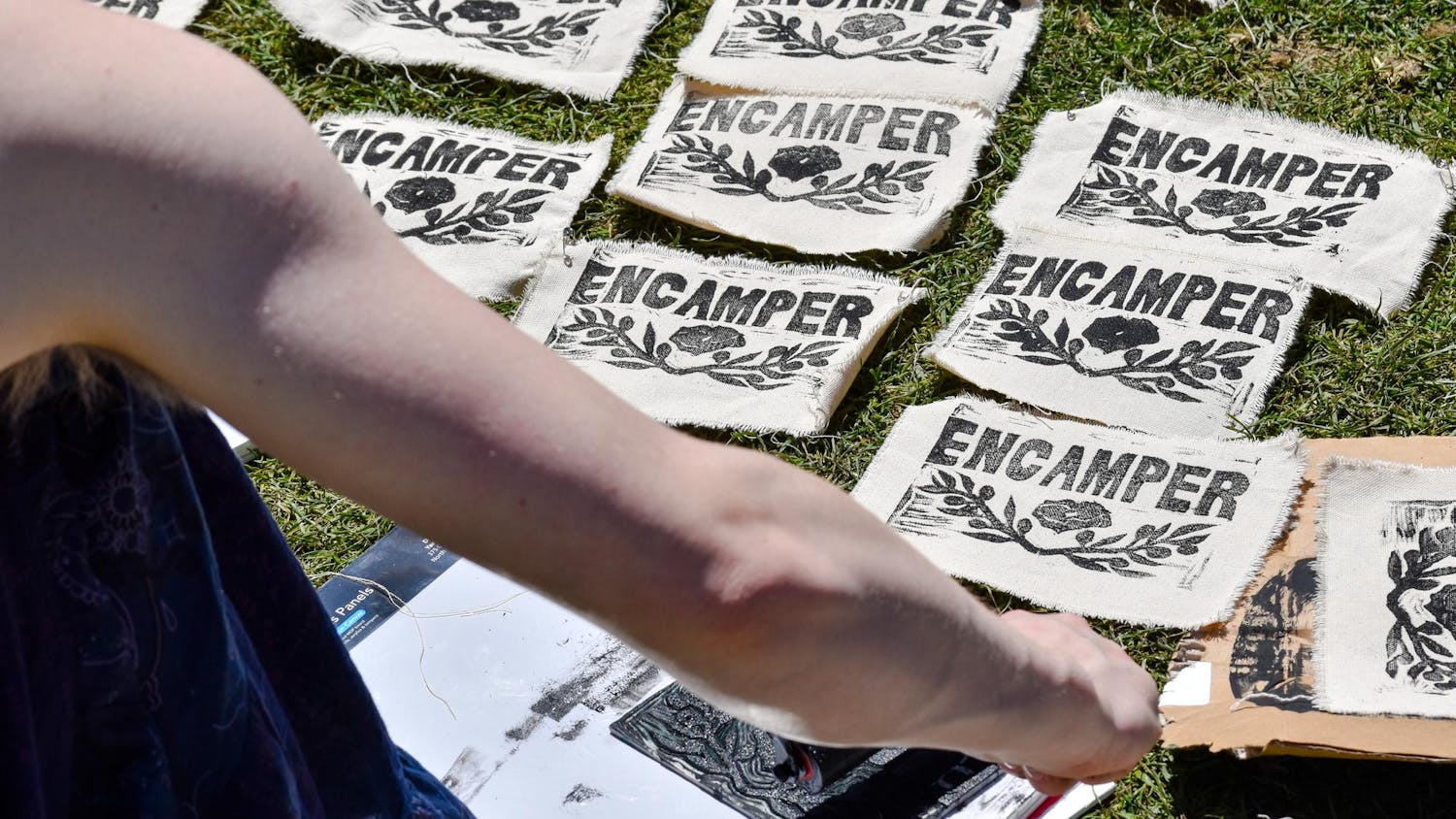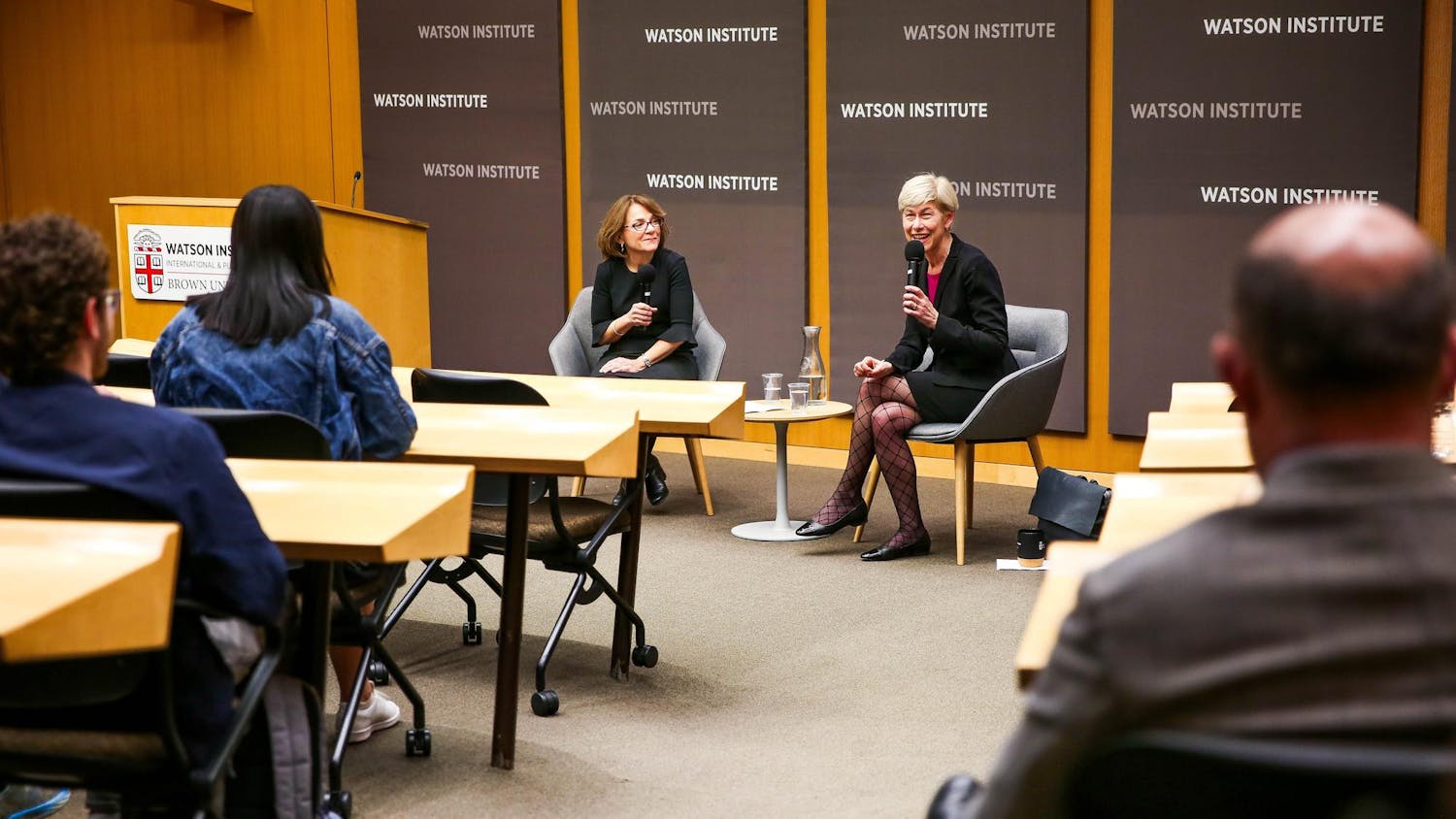This weekend, the University hosted the fourth Black Alumni Reunion, which brought over 600 graduates back to College Hill. Organized by the Inman Page Black Alumni Council with support from the Brown Alumni Association, the gathering offered an opportunity for alums to connect and reflect on the legacy of black students at Brown — particularly those who participated in the 1968 black student walkout.
The reunion culminated Saturday with the University presenting President Emeritus Ruth Simmons with the inaugural Black Legacy Award and announcing the renaming of the J. Walter Wilson building to Page-Robinson Hall in honor of Inman Page, class of 1877, and Ethel Robinson, class of 1905, who were among the first black students to graduate from the University.
The weekend began Friday evening with a panel commemorating the fiftieth anniversary of the Black Student Walkout that occurred in December 1968. During the panel, nine of the 65 walkout participants discussed their memories of the event and reflected on the personal and institutional effects of their activism, which aimed to increase recruitment of and support for black students at the University. One of the students’ key demands was that “black students must constitute at least 11 percent of the class of 1973, and of all subsequent incoming classes,” according to a position paper published by The Herald at the time.
At the time, Gary Harris ’72 P’02 P’09 said walkout participants received criticism from the University that was “largely based upon the assumption that by increasing the number of blacks at the University, … we would weaken the strength of the class.”
“We resisted that by saying that we weren’t lowering standards, that what the University needed to do was widen their net” when recruiting black students, he added.
While a group of women from Pembroke College came up with the idea to hold a walkout, panel members acknowledged a critical collaboration that existed between the men and women who participated. “We had a real sense of camaraderie among us. … We were in this together, and we were going to stick it out together,” said Gail DeCosta ’69.
For Zylpha Pryor-Bell ’72, “the most valuable impact of the black student walkout generally” was that “it brought and continues to bring people of … different races in contact with one another, where they already share the common goal of acquiring an exceptional education.” The walkout marked a significant moment in Pryor-Bell’s life because she began to see her racial identity as “something I should genuinely feel good about.”
Despite the event’s pivotal role in changing admission policies, Donna DeWitt-McGee ’84, who attended Friday night’s event, noted that “some of the people (in) classes behind us … weren’t really aware of all the history and the background of the walkout,” underscoring the importance of the panel.
“It was past time that those folks got their due, … so it was nice to see the University pause to recognize them,” said Ed Brockenbrough ’95.
On Saturday morning, Provost Richard Locke P’18, Vice President for Institutional Equity and Diversity Shontay Delalue and the Director of the Center for the Study of Race and Ethnicity in America and Professor of Africana Studies Tricia Rose MA’87 PhD’93 P’14 spoke about the University’s progress in implementing its Diversity and Inclusion Action Plan. Released in February 2016, the DIAP aims to increase representation of historically underrepresented groups on campus, strengthen research and teaching on diversity and inclusion issues and improve campus life.
“If we’re going to be known as a university that attracts the best and brightest from all walks of life, then we have to actually walk the talk,” Locke said. “We have to make sure that we’re recruiting and also supporting people when they’re here.”
During the panel, Delalue said she found “helping people to not talk about (diversity) as an add-on” to be deeply important.
“If you ask any department or student, ‘Do you care about academic excellence and innovation?’ … They’ll say yes,” Delalue said. “So I, in response, say, ‘Then you care about diversity.’ … You can’t have those things without diversity.”
Throughout Saturday afternoon, alums attended smaller panels and workshops focused on a variety of issues such as ameliorating the racial and economic inequality present in education, resolving racialized harassment in the workplace and the importance of black art and culture today.
One event, titled “Intercultural Legacy Narratives: Social Action, Equity and Diversity Across Communities,” featured a panel of alums who shared their experiences as student activists at Brown during different time periods by discussing the struggles that they faced and the lessons that they learned while attending the University.
Natasha Korgaonkar ’02, one of the panelists, said the biggest student organizing issue in her time at Brown occurred in 2001 when The Herald printed a racist ad by David Horowitz titled “Ten Reasons Why Reparations for Blacks is a Bad Idea for Blacks – and Racist, Too!”
“The incident was that this racist ultra-right wing provocateur took out an ad in The Brown Daily Herald. … (The ad) was incredibly racist and disgusting and super upsetting for many, many people on campus.”
In response to the ad’s presence in the newspaper and The Herald’s refusal to apologize for printing it, Korgaonkar and other students removed copies of The Herald from its newsstands around campus.
Through her organizing work while at Brown, Korgaonkar said she found it challenging to find a balance between collective action and equitable representation among different identities. “You’re kind of trying to figure out if it’s going to be hierarchical, and if so, what that hierarchy is gonna look like and why,” she said. Though it was important for all different affected identities to be involved in the organizing, not everyone could necessarily be the “face” of the movement, which often resulted in “hurt feelings,” she added.
Another alum, Jessica Brown ’16, spoke about her work advocating for first-generation, low-income students at Brown. Alongside other students, Brown said she “applied for a grant from the Swearer Center (to start) 1vy Gen … (and) laid the groundwork for conversations with a lot of administrators for the founding of the FLi Center.”
When asked about the potential complications that multicultural coalitions could present to individual identities, Brown said that while it was important to value the diversity of individual experiences, it was challenging to “affirm everyone’s different struggles.”
The reunion weekend closed Saturday evening with the news that the building named for James Walter Wilson, class of 1918, a former professor of biology, would be renamed Page-Robinson Hall. The announcement was made at a dinner that also honored former president Simmons with the inaugural Black Legacy Award “for her leadership, activism and commitment to social and educational justice,” according to a University press release. Simmons’ 11-year tenure was marked by the creation of the Steering Committee on Slavery and Justice to examine the University’s connections to slavery and the transatlantic slave trade. She also enacted need-blind financial aid for first-year domestic applicants as part of her Plan for Academic Enrichment.
The decision to rename the popular building serves to “memorialize the contributions and the struggles of black alumni,” according to the press release.
At the event, President Christina Paxson P’19 spoke about Page’s and Robinson’s groundbreaking contributions to education. Page, who was born into slavery, “sought liberty and opportunity, and he found them at Brown. He went on to teach and mentor and lead and break down barriers in higher education as the president of not one, but several colleges and universities,” Paxson said.
Through her studies, Robinson “broke both a color barrier and a glass ceiling when she graduated as the first black woman from Brown in 1905. … She went on to teach English at Howard University, and she was instrumental in founding the first black sorority Alpha Kappa Alpha,” she added.
Following the announcement, Simmons delivered the evening’s keynote address. Simmons highlighted the importance of alums giving sustained support to the University. “You must not be a visitor and you must not be a supplicant here. You must own this place; it is yours. But if it is yours, you must give back to it,” she said.
In addition to supporting the University, Simmons stressed the need for alums to support the current generation of Brown students. “They are going to falter, they are going to become discouraged, they will have moments when they think it isn’t worth it, and you must be in a position to pick them up and carry them,” Simmons added.
To close her speech, Simmons implored the audience to stand up for their beliefs as boldly as the students who participated in the 1968 walkout did. “We must not be invisible and we must not feel we’re obligated to speak softly. … Tell your truth. Tell your truth everyday, tell it when people don’t want to hear it, tell it when people don’t want to listen, because children are watching you to see if you dare tell your story.”





